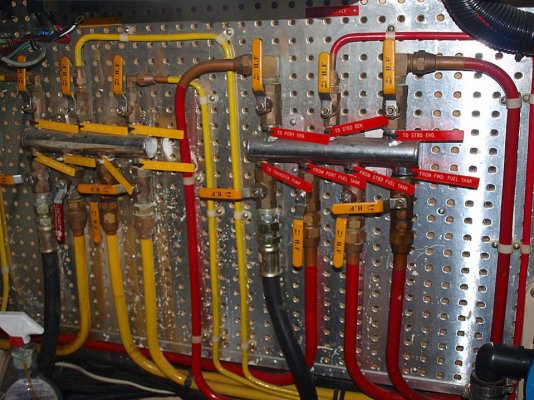PuppyR
Veteran Member
I have a 1981 34-foot Marine Trader double cabin. The house bank is six golf cart batteries and is located under the salon bench on the starboard side. It causes the boat to list about two inches to starboard. The batteries weigh about 60 pounds each so it’s about 360 total pounds. Should I offset this by placing a counterbalance weigh on the port side to even out the boat, or just leave it be? If counterbalancing what should I use. I can’t move half the batteries to the port side.

